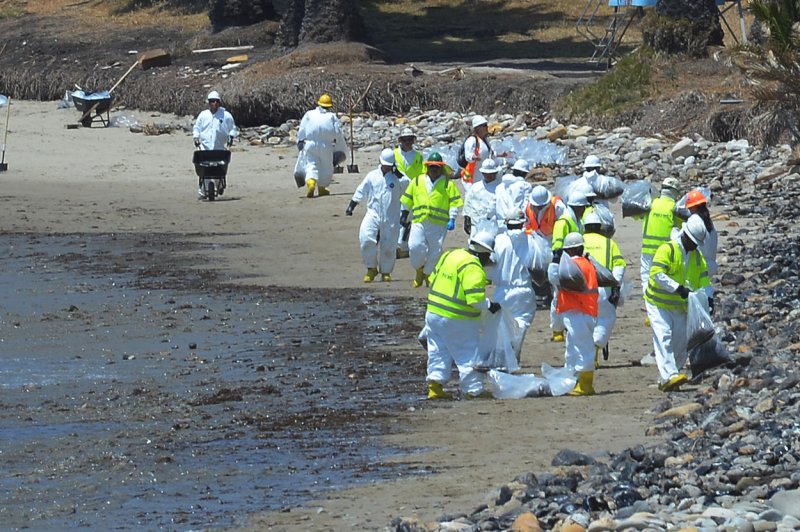Federal report puts blame for an oil spill on the beaches of California last year directly on the company that operated the pipeline, Plains All American. Photo by Jim Ruymen/UPI |
License Photo
WASHINGTON, May 20 (UPI) -- Preventable errors on the part of Plains All American Pipeline led to last year's oil spill at a beach in California, the U.S. transportation secretary said.
The Pipeline and Hazardous Materials Safety Administration, part of the Transportation Department, completed its investigation into the May 19, 2015, oil spill in Santa Barbara County from Line 901, operated by Plains. The rupture released around 3,000 barrels of oil into the Pacific Ocean and on Refugio State Beach.
Migrating from the beach along the coast of California, the federal government said it was the worst spill in the state in a quarter century.
"PHMSA's investigation reveals that a number of preventable errors led to this incident, and that the company's failures in judgment, including inadequate assessment of the safety of this line and faulty planning made matters worse," U.S. Transportation Secretary Anthony Foxx said in a statement.
The California and Santa Barbara county attorneys general this week filed criminal charges against Plains and one of its employees, 41-year-old James Buchanan, for the release. The penalties could amount to $2.8 million for Plains.
Plains said it was "deeply disappointed" with the decision to pursue criminal charges. The charges have no merit and are an "inappropriate" response to an accident, the company said.
External corrosion of pipeline walls was identified as the direct cause of the failure. An inspection was conducted two weeks before the incident, though the PHMSA said the inspection tool used didn't adequately determine the extent of the corrosion.
"The discrepancies between the tool measurement and the actual corrosion were as much as 40 percent in the area where Line 901 failed," the PHMSA said.
Furthermore, the federal report found the system used to detect leaks failed and a control-room operator "inhibited an alarm" that would've helped identify the fault.
"This report confirms our preliminary findings on the cause of this incident, and reveals that the operator failed on multiple levels to prevent, detect and respond to this incident," PHMSA Administrator Marie Therese Dominguez said.















